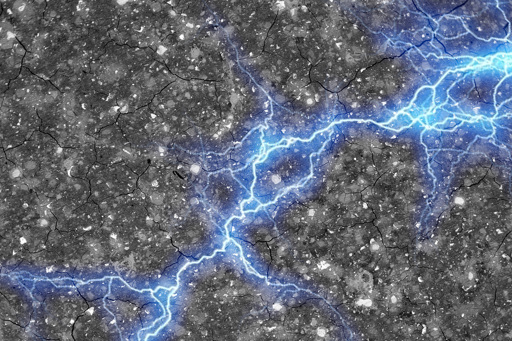A 2023 study at MIT made this discovery, which could be a boon for storing electricity.
The team calculated that a block of nanocarbon-black-doped concrete that is 45 cubic meters (or yards) in size — equivalent to a cube about 3.5 meters across — would have enough capacity to store about 10 kilowatt-hours of energy, which is considered the average daily electricity usage for a household.
3.5 cubic meters of material ought to be enough to make quite a comfy house
There is a tradeoff between the storage capacity of the material and its structural strength, they found. By adding more carbon black, the resulting supercapacitor can store more energy, but the concrete is slightly weaker, and this could be useful for applications where the concrete is not playing a structural role or where the full strength-potential of concrete is not required.
They talk about making roads with the material, but I suspect electrical posts (utility poles) could also be made of this, which would certainly last much longer than roads and be cheaper to maintain and fix
Tired AF of these non YSK posts.
Nobody needs to know this. Nobody.
Especially when it’s an unrealized technology that has been “calculated” to be possible.
A lot of shaky stuff in here that has a long way to go before it makes it out of the lab.
3.5 cubic meters of material ought to be enough to make quite a comfy house
OP, a 3.5 m-wide cube is not 3.5 cubic meters. That’s the size of a decently large shed… Of solid concrete.
would have enough capacity to store about 10 kilowatt-hours of energy, which is considered the average daily electricity usage for a household
No mention in the article about round trip efficiency, self-discharge rates / storage duration, etc.
Storing 10 kWh doesn’t mean much if it loses much of that to internal losses, leakage into the environment, etc., before you can use it.
Capacitors generally tend to be designed to store very little energy but can charge/discharge repeatedly at a high rate. Is this designed to discharge quickly? If so, what happens if someone touches the giant Borg cube in your yard?
Concrete is also prone to cracking, which last I checked, is not good for electronics.
That said, this is an interesting concept, and if it can perform at a useful level / scale, I could see industrial uses for large systems with high peak loads / energy recovery / regenerative braking, as a cost effective way to smooth grid loads, but probably wouldn’t expect to see it in use at people’s homes for a loooong time.
Less “you can make a super capacitor at home”, more “innovative material uses may one day make super capacitors more cost effective for certain applications, if it can be scaled out of a lab”
Yeah a 3.5m cube is 3.5^3 cubic meters. You gotta change the number the same as the unit. Honestly KL might be better than m^3 for intuitiveness
It is cool, and yes the prototype they made is the size of a coin battery. They made three 1v “super capacitors” and linked them together to light a 3v LED.
That said, my only question was should they ever get it to be able to store and discharge 10kW, wouldn’t it necessarily all discharge at once? Like, it’s not a battery - but that’s a small problem after they’ve solved the big ones.
Failed electrical engineering major here - it turned out I was built to be a scientist, not an engineer, but it took a year of EE classes to figure that out.
Regarding energy storage, capacitors aren’t much different than batteries, but they can charge/discharge faster, have lower energy density (units of stored energy per units mass), and self-discharge faster, hence why they aren’t used in place of batteries. For something where weight and volume aren’t an issue and with no need for long-term storage, like a solar-equipped house, a huge cap would be a great option. I’m trying to figure out how to build one of what’s described it the article now.
The rate at which a capacitor discharges varies just like a battery, proportional to the resistance of the circuit. The reason most folks associate capacitors with “shorted terminals go boom” is the maximum rate of discharge on a capacitor is much higher than a battery, plus some capacitors operate at a much higher voltage than is practical for a battery, increasing the likelihood of generating a small arc. Shorting the terminals with a conductor makes a low resistance circuit so it just dumps its charge, whereas a battery would max out at a much lower rate, typically making a toasty wire versus a vaporized or melted wire.
Thank you!
That’s neat, but a typical house foundation only uses like 10-15 cubic meters of concrete. Even a flat 8” slab for a 40’x40’ house (huge footprint!!!) uses 30 cubic meters of concrete. Only 2/3 the 45 they say.
Concrete is also pricey already ~$250 a meter (CAD, US is close).
I wonder if you could make a 1m thick foundation of this stuff beneath each house which works as a sort of battery for the house in case power goes out.





